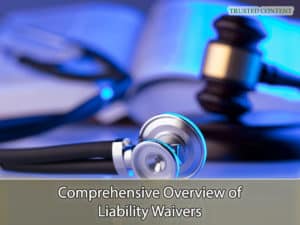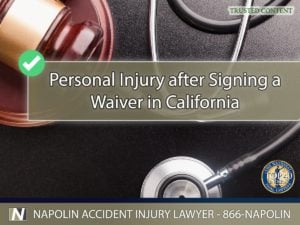Dealing with Personal Injury after Signing a Waiver in California
In the diverse landscape of California's legal system, understanding the nuances of liability waivers is essential, particularly for those engaging in activities that pose a risk of injury. These waivers, often a standard part of many recreational and sporting activities, carry significant legal implications. It's vital for participants to comprehend what they are agreeing to and the potential impact on their rights, especially in the unfortunate event of an injury. This article aims to demystify the complexities surrounding liability waivers and personal injury law in California, offering crucial insights for those who find themselves navigating this challenging terrain.

Comprehensive Overview of Liability Waivers
Comprehensive Overview of Liability Waivers
Liability waivers, a staple in many activity-based settings in California, serve as legal agreements where participants relinquish the right to sue the organization in the event of an injury. These documents are prevalent in settings ranging from fitness centers to adventure sports venues. The primary purpose of these waivers is to protect organizations from lawsuits stemming from ordinary incidents or accidents that are considered inherent risks of the activity. However, the legal enforceability of these waivers can vary based on several factors, including the circumstances of the injury and the specific wording of the waiver itself.
Deciphering the Legal Boundaries of Waivers in Personal Injury
The legal landscape surrounding liability waivers is not absolute. While signing a waiver does imply a level of acceptance of risk, it does not necessarily eliminate all avenues for legal action in California. The effectiveness of a waiver in precluding a lawsuit depends significantly on the nature of the incident and the type of negligence involved. Understanding these nuances is crucial for anyone who has signed a waiver and later finds themselves injured, as it determines the potential for legal recourse.
Detailed Analysis of Circumstances Voiding Waivers
In California, several specific scenarios can lead to the nullification of a liability waiver. These include instances of gross negligence, where the conduct of the organization or its employees significantly deviates from standard care, leading to injury. Other scenarios include injuries resulting from risks not explicitly covered in the waiver, or if the waiver was signed under conditions that question its validity, such as coercion or misrepresentation. The clarity and comprehensibility of the waiver's language also play a critical role in its enforceability.

Exploring the Distinction Between Ordinary and Gross Negligence
Exploring the Distinction Between Ordinary and Gross Negligence
A key aspect in the realm of liability waivers is the distinction between ordinary and gross negligence under California law. Ordinary negligence refers to failures in following standard care, which are often covered by waivers. In contrast, gross negligence involves a blatant disregard for safety, an extreme deviation from expected conduct. This distinction is pivotal in determining whether a liability waiver holds up in the event of an injury, as gross negligence can often lead to the waiver being deemed unenforceable.
Assumption of Risk Agreements and Their Scope
Assumption of risk agreements, another term for liability waivers, typically specify the types of risks and injuries they cover. These agreements are designed to include injuries resulting from risks that are either explicitly mentioned in the document or are generally foreseeable in the context of the activity. However, injuries arising from risks that were not disclosed or are extraordinary in nature often fall outside the protection of these waivers, opening the door for legal claims.
Navigating Legal Options Post-Injury
For individuals in California who have sustained injuries after signing a waiver, understanding the available legal options is crucial. The first step is often consulting with a knowledgeable personal injury lawyer who can assess the specifics of the case, including the waiver's terms and the circumstances of the injury. This professional evaluation is essential in determining the viability of a legal claim and the best course of action to pursue justice and potential compensation.

Dealing with Personal Injury after Signing a Waiver in California
Dealing with Personal Injury after Signing a Waiver in California
At Napolin Accident Injury Lawyer, we are committed to providing comprehensive legal support to those facing personal injury challenges in California. Our approach is tailored to each client's unique situation, with a focus on navigating the complexities of injury claims, especially in cases involving signed waivers. Our team brings a wealth of experience and a deep understanding of California's legal landscape, ensuring that our clients receive the informed and effective representation they need.
Understanding your legal rights in the aftermath of an injury in California, particularly after signing a liability waiver, is of paramount importance. If you find yourself in such a situation and are seeking legal guidance, reach out to Napolin Accident Injury Lawyer at (866)-NAPOLIN for a free consultation. Our dedication lies in empowering injury victims, helping them to navigate the legal system with confidence and securing the justice they deserve.
- Safely and Legally Navigating Parking Lots in California - July 15, 2024
- Navigating the Aftermath of a Highway Auto Accident in California - July 15, 2024
- An Overview of California's Commercial Truck Insurance Laws - July 15, 2024
